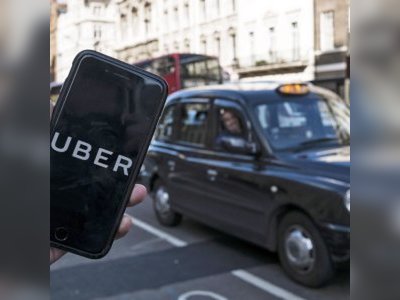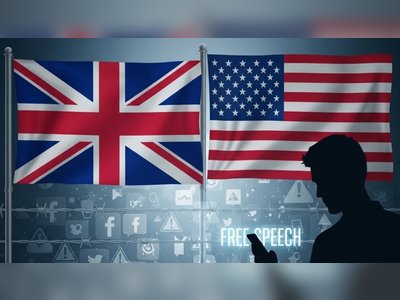Netflix was the best-performing stock of the decade, delivering a more than 4,000% return
Subscriber growth in recent years has been driven by the company’s international expansion.
At the beginning of the 2010s, Netflix had just over 12 million subscribers paying $9 a month, primarily for the joy of receiving those iconic red envelopes in their mailbox. The company was worth a few billion dollars.
Investors with the foresight to look past physical DVDs and buy into CEO Reed Hastings’ vision of a streaming-filled future made the deal of the decade.
A $1 million bet on Netflix’s stock placed on Jan. 1, 2010, would be worth close to $43 million today. The 4,181% return, as of Friday’s close, beats all current members of the S&P 500, which Netflix joined in December 2010, replacing The New York Times. The index as a whole is up 189% over the past 10 years.
Far from its mid-cap days of the late aughts, Netflix now has a market cap of close to $148 billion, making it one of the 40 most valuable U.S. companies.
The stock’s meteoric rise has always perplexed those investors who concern themselves with fundamental financial metrics like profit and cash. The company runs on a thin - sometimes razor-thin - operating margin and has negative free cash flow, a reflection of how much it costs to buy and invest in the kinds of entertainment consumers want to watch. Furthermore, the ballooning roster of cash-rich competitors, ranging from Apple to Disney, is forcing Netflix to spend more on movies and TV shows to keep customers from canceling their membership.
Netflix permabear Michael Pachter of Wedbush Securities repeatedly calls the company’s valuation “unwarranted,” and warns clients of ongoing cash burn and “content migration to competing services.”
Existential threats aren’t just hypothetical scenarios for Netflix. Crises have been very real, none more so than what became known as the Qwikster debacle in 2011. In July of that year, Hastings raised the price of monthly memberships by splitting DVDs and streaming into separate subscriptions, and then in September announced plans to renamed the DVD unit Qwikster.
Customers fled and the stock plunged 75% in four months, forcing Netflix to backtrack on the spinoff and then raise $400 million in emergency funding.
Jay Hoag, a Netflix board member and early backer, co-led the late 2011 financing. Hoag’s firm, Technology Crossover Ventures, pumped in $200 million in exchange for convertible notes. On a split-adjusted basis, TCV acquired more than 16 million shares at $12.26 apiece. With the stock now trading at over $336, TCV’s current stake is worth about $1.66 billion, and that’s after selling a big chunk of its shares in the years since the investment.
“When you’re being contrarian is when you’ll end up with the most exceptional returns, if you’re right,” said Hoag, who years earlier had to perform the Heimlich maneuver on Hastings at a lunch meeting.
In reflecting on TCV’s investment, Hoag told CNBC there were four main things “we felt really good about that were contrary to conventional wisdom.” They were:
The team - After the price hike and Qwikster debacle, “the management team goes from being viewed as great to stupid and incompetent” almost overnight, he said. TCV was betting on Hastings, who co-founded the company in 1997, and against the critics.
Streaming - Film studios were focused on digital downloads, while Netflix was pushing the on-demand model of watching when you want, where you want from whatever device. The rapid expansion of high-speed broadband would work in Netflix’s favor.
Licensing - Studios were saying that Netflix wouldn’t be able to afford premium streaming content, but Netflix was driving a new model and had a history of proving that it could make money for the industry.
International - Netflix was just beginning to leave the U.S., launching in Canada in late 2010 and Latin America in 2011. Wide swaths of Europe were on the road map for 2012, with Japan and India in the future.
Hoag admits that, across the board, the story played out better than the firm could have ever expected. At the time of the investment, original content was only a “gleam in the eye” of the company and there were no proof points of success. A Norwegian show called “Lilyhammer” was slated to debut in North America on Netflix in early 2012, but that was it.
Now, originals are the story.
Netflix projected it would shell out $15 billion on content in 2019, up almost 70% from two years earlier. Chief Content Officer Ted Sarandos, a 19-year company veteran, said last year that 85% of new spending is on originals. To fuel that spending spree, Netflix has borrowed close to $10 billion in the past two years, more than doubling its debt load over that stretch and leaving the company with almost twice as much debt as equity.
The costly battle for content
Some skepticism has started to seep into the shareholder base. The stock’s 26% gain this year trails the S&P 500 by 3 points and the tech subgroup by over 20 points. Disney’s jump into the streaming wars with Disney+, along with WarnerMedia’s HBO Max and NBC’s Peacock present not only potential competitive threats but raise the very real concern that they’ll limit Netflix’s access to their vast portfolios of content.
It started happening this year, with NBCUniversal announcing that it’s pulling “The Office” from Netflix for its own use, and “Friends” moving to HBO Max.
“You can’t name any medium where the creator of the content lets the distributor of the content capture all the value,” said Wedbush’s Pachter. “It doesn’t exist.”
Pachter has a sell rating on Netflix and a $188 price target, suggesting a 44% drop. He downgraded the stock in 2011, leading anyone who’s followed his advice to miss out on a historic rally. Earlier this year, he compared his persistent bearish thesis to a “broken clock” because “we’re bound to be right over time.” He calls Netflix a “mythical stock,” and insists the company’s cash burn and the costly battle for content will eventually be reflected in the price.
A Netflix spokesperson declined to comment or make executives available for an interview.
Netflix’s strategy amid the loss of popular shows has been to pay up for must-watch originals and then promote them like crazy.
Martin Scorsese’s “The Irishman,” Noah Baumbach’s “Marriage Story,” and “Dolemite is My Name,” produced by and starring Eddie Murphy, are just three of Netflix’s original movies from 2019, a year that saw the company rack up Golden Globe nominations. Meanwhile, hit shows like “Ozark,” “The Crown,” “The Kominsky Method” and “House of Cards,” Netflix’s first breakout hit in 2013, have propelled the company to numerous Emmy nominations.
While Netflix produces and owns some of its originals, like Emmy Award-winning “Stranger Things,” most of its content is licensed. Increasingly, those licenses are global, meaning Netflix can pitch its monthly service to subscribers in Japan, India and Eastern Europe and not have to worry about securing rights on a country-by-country basis.
At the end of the third quarter of 2019, Netflix’s member base had soared to 158.3 million, more than doubling in four years. International growth has been the catalyst, with non-U.S. subscribers now accounting for 62% of the total, up from 51% in the same period of 2017 and 36% in 2015.
“We couldn’t have known 10 years ago how good Netflix could be at developing original content, and we couldn’t have known how widely accepted the content would be globally,” said Gil Simon, chief investment officer at SoMa Equity Partners in San Francisco.
Simon is so bullish on Netflix -he calls it “the single best investment I’ve made” -that his firm has about 10% of its $2 billion under management in that one stock.
“There’s no game in town that can compete with the size and engagement of Netflix’s audience,” Simon said. “That’s a very powerful source of new content acquisition.”
In a December filing, Netflix broke out subscribers into four global regions for the first time. After North America, the Europe, Middle East and Africa region is the biggest with 47.4 million paid memberships, followed by Latin America at 29.4 million and Asia-Pacific at 14.5 million.
The bigger Netflix’s audience and the greater the company’s willingness to spend, the more it becomes clear that Netflix is wielding a ton of power in Hollywood. Along the way, it’s gaining the full-throated support of many of the industry’s loudest voices, who view Netflix as the strongest counterbalance to the big studios.
In November, Scorsese wrote an op-ed in The New York Times, conveying his rancor at the current state of film, the demise of independent theaters and the uniformity of multiplexes across the country. As a director focused on twisting plots and complex characters, Scorsese wrote that “it’s a perilous time in film exhibition,” with streaming as the only real option for many creators.
“That includes me, and I’m speaking as someone who just completed a picture for Netflix,” he wrote. “It, and it alone, allowed us to make ‘The Irishman’ the way we needed to, and for that I’ll always be thankful.”
‘Creative autonomy’
Cindy Chupack, who wrote and produced for HBO’s “Sex and the City” and ABC’s “Modern Family,” spent 10 years looking for financing for a film about three mothers trying to stay connected to their adult sons. She repeatedly struck out until connecting with Netflix a few years ago.
She presented the script for what became “Otherhood,” and Netflix told her to go find a cast. She landed the award-winning Angela Bassett, who then attracted Patricia Arquette and Felicity Huffman. Netflix greenlighted the production and gave the crew $12 million to create it. They filmed for 27 days in New York and released the movie in August.
As of October, “Otherhood” was among the 10 most-watched Netflix original films of the year, with 29 million views in its first four weeks. Chupack said she got a ton of support from a 30-person marketing team at Netflix that laid out how it was going to roll out the film in various countries, translate it into the necessary languages while also presenting strategies for social media marketing and targeting to the most relevant audiences.
Even with all that help, when it came to the substance of the film and the way it was directed, Netflix was hands-off, Chupack said.
“If you want to make a film and make it your way, they’re offering that,” she said. “They’re offering a lot of creative autonomy.”
The drawback is that there’s no financial upside. The money Chupack and crew were paid to make “Otherhood” is all they’ll see, regardless of how well the film performs and how many eyeballs it reaches.
“The upside is the downside,” she said. “But your downside is mitigated. And you made a movie.”
For investors coming in at the current price, the potential downside is dramatic. With a price-to-earnings ratio for the next 12 months of 61.3, Netflix is among the 15 most expensive stocks in the S&P 500 on that basis, according to FactSet.
High debt, high costs and high competition create a volatile equation for a company that has over half the market cap of WarnerMedia parent AT&T and only 12% the revenue. But because Netflix has spent the entire decade defying the odds and rewarding investors, it’s created a sense of FOMO (fear of missing out) like perhaps no other stock.
Simon of SoMa Equity says you just have to look at the global opportunity to see how Netflix can get so much more out of its licenses and turn its high costs into eventual profits. He sees Netflix taking shows like “The Crown” and “Narcos” and packaging them with content that’s regionally specific, luring in more and more subscribers.
It’s going to take a while. Netflix is projecting its cash burn will drop off starting next year, though the company isn’t saying when it will turn free cash flow positive. Simon continues to play the long game.
“We are very early in Japan, in India, in Eastern Europe - big markets where Netflix is still scratching the surface,” Simon said. “There are very few companies focused on going to those markets and producing content for those countries.”













